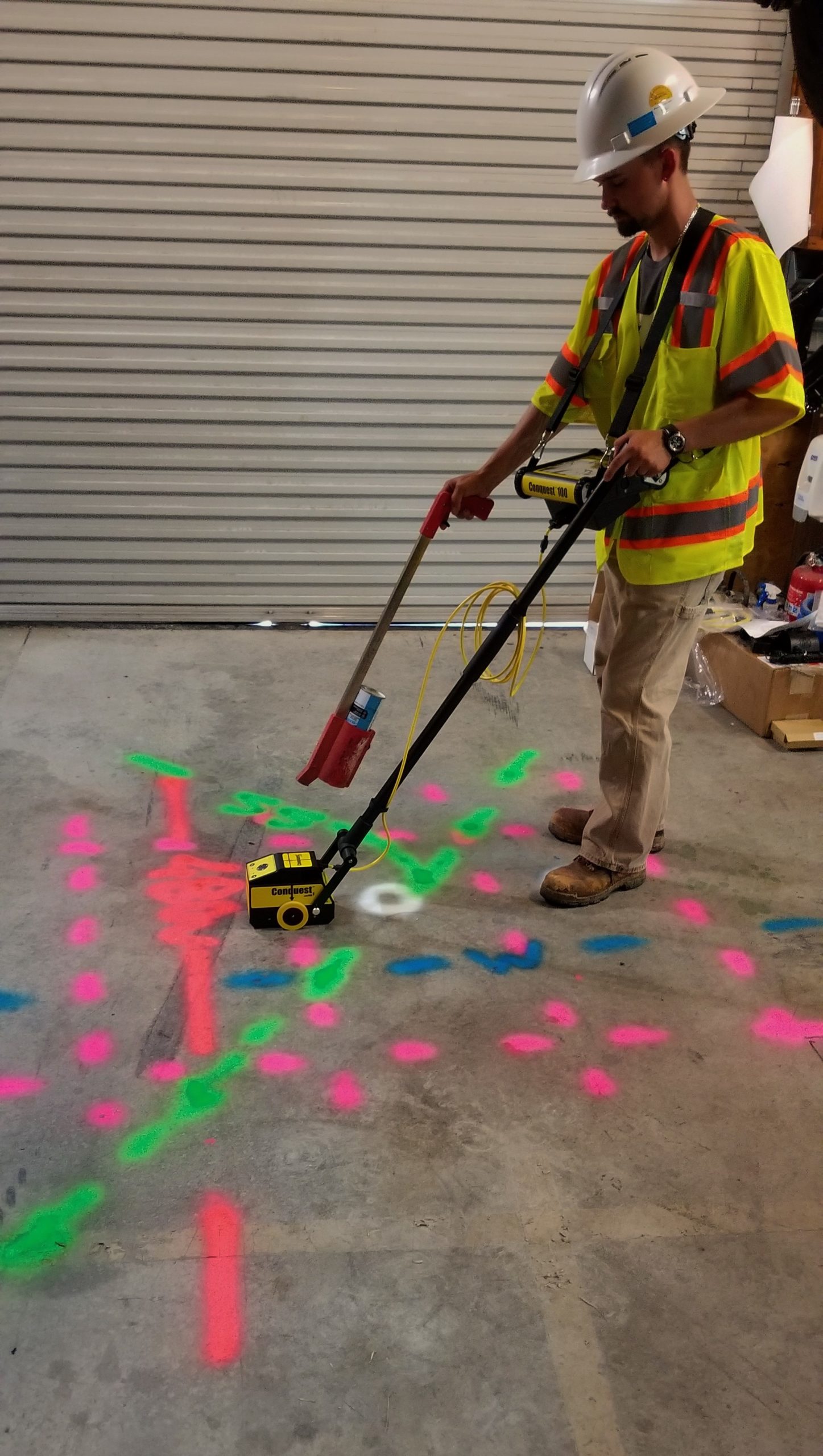Checking Out the Trick Advantages of Concrete Scanning in Construction Projects
In the realm of modern building practices, the usage of concrete scanning modern technology has arised as a crucial tool for guaranteeing project efficiency and architectural stability. From enhancing precaution to precisely detecting energies hidden below the surface area, the benefits of concrete scanning are diverse. The ability to streamline task timelines and lower prices while preserving existing structures is a testimony to the value this technology brings to the construction market. As we explore the nuanced benefits of concrete scanning, it becomes evident that its effect prolongs much beyond surface-level assessments, using a peek right into the detailed internet of benefits waiting to be discovered.
Improved Safety Actions
Utilizing innovative concrete scanning technology enhances security procedures on building websites by supplying exact discovery of potential dangers hidden beneath the surface area. This modern technology allows building groups to identify rebar, avenues, post-tension cables, and various other blockages before excavation or boring, significantly minimizing the danger of crashes. By pinpointing these components precisely, employees can prevent damaging important architectural parts, hence preventing injuries, delays, and expensive repair work.
Moreover, concrete scanning plays an important duty in making certain the honesty of existing structures during expansions or restorations. By identifying weak points, gaps, or damage within concrete components, engineers can attend to these problems proactively, enhancing the general security and long life of the structure. This aggressive technique not only minimizes the threat of architectural failings but additionally minimizes the capacity for accidents triggered by unanticipated structural shortages.
In essence, the application of concrete scanning innovation functions as a positive safety and security measure that safeguards both building employees and the structural stability of buildings, ultimately contributing to the overall success and effectiveness of building and construction tasks. - RainierGPR Concrete Scanning
Accurate Discovery of Utilities
Concrete scanning technology promotes precise identification of below ground utilities, enhancing construction site safety and security and effectiveness. Precise detection of energies is critical in building jobs to avoid costly problems, task hold-ups, and most importantly, guarantee the safety of employees and the general public. By making use of innovative scanning technologies such as ground-penetrating radar (GPR) and electromagnetic induction, building groups can map out the area of hidden pipes, cords, and various other energies with high degrees of precision.

Time and Expense Efficiency

Concrete scanning technology makes it possible for construction teams to precisely find rebar, post-tension cables, and other ingrained items within concrete frameworks. This precise info assists in avoiding costly errors such as unintended damages to crucial aspects throughout boring, reducing, or coring activities. Additionally, by identifying prospective threats beforehand, the need for expensive repair work or revamp because of damages can be minimized, bring about cost financial savings for the job.

Additionally, the capacity to swiftly and precisely spot utilities under the surface without triggering any kind of damage not just conserves time but also protects against expensive interruptions to existing infrastructure. Generally, the moment and expense efficiency advantages of concrete scanning make it an indispensable device for boosting construction project management and implementation.
Preservation of Structural Honesty
Preserving the structural stability of structures and framework is critical in ensuring long-term security and safety and security. Concrete scanning plays an essential function in this preservation procedure by permitting construction professionals to recognize possible threats to the architectural honesty of a building or facilities prior to they intensify into major concerns. Via making use of advanced scanning technologies such as ground-penetrating radar (GPR) and electromagnetic induction, construction teams can non-invasively evaluate the condition of concrete structures, find rebar, post-tension best site cords, and various other embedded components, and identify any spaces, cracks, or wear and tear within the concrete.
Improved Job Preparation
In order to make sure the successful execution of building and construction projects, precise interest to information and complete planning are crucial parts that stem from a detailed understanding of the architectural conditions recognized via concrete scanning. Inevitably, including concrete scanning into the task planning stage boosts coordination among group members, fosters aggressive problem-solving, and contributes to the effective shipment of construction tasks within budget plan and schedule restrictions.
Final Thought
In verdict, concrete scanning uses many benefits in building and construction jobs. By enhancing safety and security procedures, properly discovering energies, enhancing time and cost performance, preserving architectural integrity, and helping in project planning, concrete scanning confirms to be an important tool for effective job execution. Its capability to reduce risks, increase efficiency, and make sure project integrity read this makes it an indispensable asset for building and construction professionals.
In the world of modern-day building techniques, the usage of concrete scanning innovation has actually emerged as an essential device for ensuring job effectiveness and structural integrity.Concrete scanning innovation allows building teams to accurately locate rebar, post-tension cables, and various other embedded items within concrete structures. Via the use of advanced scanning technologies such as ground-penetrating radar (GPR) and electromagnetic induction, building and construction groups can non-invasively evaluate the condition of concrete frameworks, find rebar, post-tension cables, and various other embedded aspects, and identify any voids, cracks, or damage within the concrete.
In order to ensure the effective implementation of construction tasks, precise focus to detail and extensive preparation are vital elements that stem from a thorough understanding of the structural conditions recognized through concrete scanning. Ultimately, including concrete scanning right into the project preparation phase improves sychronisation among group participants, cultivates aggressive problem-solving, and contributes to the successful delivery of building jobs within spending plan and timetable constraints.